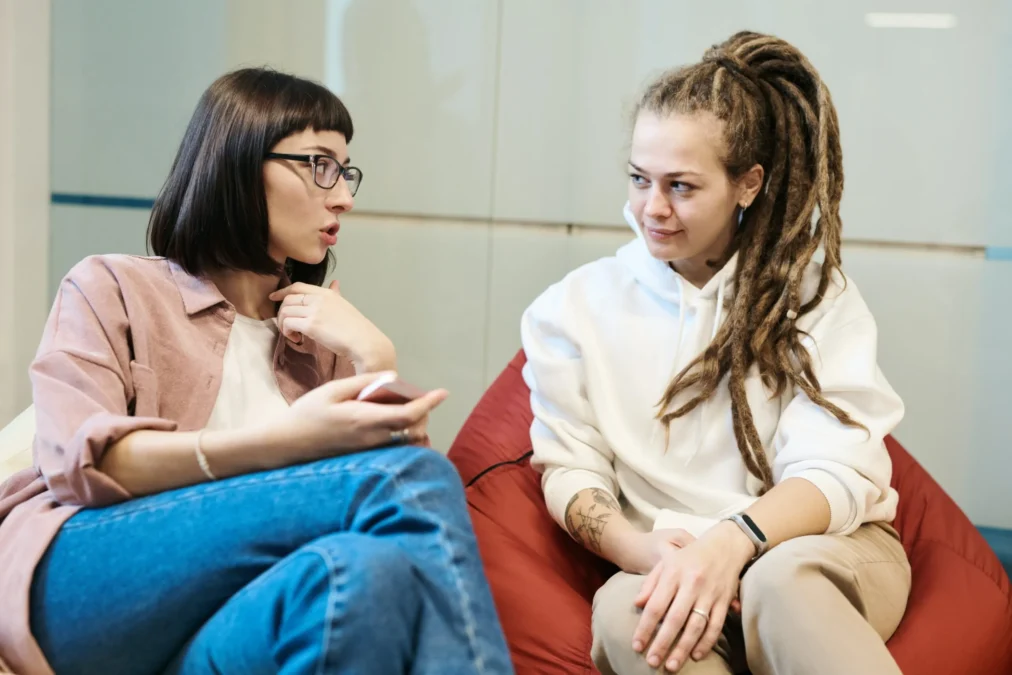Leading people is all about telling people what to do right? And helping people solve their problems is down to good advice, yes?
Well, no; on both counts actually.
Both research and practice have shown that while instruction and advice can be helpful (in certain circumstances) generally there is a better approach to assisting people to think and make good choices. More than 20 years as a leader and 10 years as an executive coach has certainly taught me that. Not only that, my experience as a parent has also shown the limitations of a purely directive approach to managing and decision-making. These things are not just limited to our business interactions. This is about basic communication skills.
The thing that has helped me most in turning this understanding into adopting a better approach has been the work of Nancy Kline. She has over three decades of research into independent thought and the barriers to quality decision-making. Her book, Time to Think, has impacted me more than anything else I have read in the past 5 years. It is also the book I recommend the most both professionally and personally.
Nancy Kline developed a framework called the Thinking Environment. This is made up of ten components: attention, equality, ease, appreciation, encouragement, information, feelings, diversity, incisive questions,and place. All these elements are important for facilitating quality thinking but, in my experience, there are three things that people struggle with the most and one thing that is more important than all the rest. These are:
- Attention – truly listening without interruption
- Incisive questions – knowing what to ask and when
- Information – sharing facts and experience, not advice
And the most important thing is the first. Attention.
The most empowering thing to assist people’s thinking
How many times have you been challenged with “Hey! Are you listening?” The scary thing is that you are likely to hear that from the people you care about the most. What does that say about how we appreciate the people we love? That is what attention demonstrates. It is an affirmation of our feelings for the other person. And that is because giving attention requires effort.
Sound is going in our ears all the time but that does not mean we are really hearing. That is the difference between passive and active listening. To truly give attention to someone, we must actively focus on that person and what they are saying. That means no distractions and no interruptions. Empathetic listening goes even further. We must engage our emotional intelligence to pick up on non-verbal cues. We need to engage our intuition and feelings to relate to what is being communicated, not just what is being said.
Interrupting people damages quality independent thought on several levels. Firstly, it is rude. Cutting in on someone expresses that you think what you have to say is more important than what they have to say. You may not intend to communicate that but it is what most people will feel. Secondly, an interruption also cuts into someone’s thought flow. At the very least it will cause a break in thinking and very likely whatever is said will push the flow of thoughts in a different direction.
Not saying something is really, really hard to do. I get it; I have been coaching for years and still, every time, I must fight the urge to talk. That is because our brains are not inactive. What we hear from the other person sparks thoughts, ideas, and memories of our own. These thoughts bubble up and we want to share them. We want to because they are brilliant, thoughtful, helpful things to say, or at least we think they are! But that is just an assumption. Trust me. Hold onto those thoughts and don’t say anything.
Sometimes I do a simple mental exercise to help. When a thought comes into my head and I feel myself losing concentration I picture a door closing on my idea, locking it away, so I can focus and listen once again.
Even once the other person goes quiet, do not immediately say something. Not even a question. Many times, when coaching, there has been a long silence and I have been tempted to ask another question. Then suddenly the other person has started speaking again, revealing a new – frequently deeply – cascade of ideas that would have been lost if I had spoken too soon.
So, give people your attention. Listen, and most importantly don’t interrupt them!
The most powerful type of question you can ask
When it does come time to speak don’t share your ideas, don’t even comment on what they have said. Even if they ask, “so what do you think?” you can turn the focus back to them. I often say something like, “I think you are doing a great job thinking this through, what more do you think or feel or want to say?” This generally releases another flow of thoughts and ideas.
If the thoughts do dry up then questions, rather than advice, is most helpful. And the best questions, the ones Kline refers to as incisive questions, are ones that identify assumptions. We all make assumptions in our thinking and decision-making. We make them so often that we often forget to see them for what they are: assumptions, not facts. It often takes someone else to challenge our thinking. Our assumptions might be reasonable but very frequently we feel unable to act because we have a false assumption that is blocking our progress.
These assumptions are often tied to our internal monologues. We often don’t do something because we assume we are not beautiful enough, rich enough, clever enough, brave enough or just not good enough. We all have some negative ideas around how we see ourselves or how we expect other people to judge us.
So, ask questions such as “what are you assuming that is stopping you?” and allow the other person to list their assumptions, as there are likely to be more than one. Then you can ask which assumption is the biggest blocker. Once identified the next question should explore whether the person thinks the assumption is true or not. Quite often, at this stage, people realise that the assumption is not true, or at least not limiting, and suddenly they are free to act.
All the advice in the world is not as powerful as seeing people released from these sorts of limiting beliefs. Seeing people liberated in this way and being part of facilitating that is one of the most wonderful things you can do. Ask any coach, counsellor or psychiatrist.
Provide critical information rather than advice
Once you have listened and – if needed – asked some pertinent questions, it may be that the other person needs some information. The temptation is to provide input too early in the conversation. But there is a difference between helping people think through issues themselves and keeping people in ignorance.
If the other person gets stuck in their thinking, and it is obvious that there is some information that the other person is missing, then it is time to speak. But frame what you say.
The most helpful phrase I use at this stage is to preface what I say with “in my experience” and then go on to share what I have in mind. Just because something has worked or not worked for us does not make it a fact. If there are resources and evidence that you can point people to then great, just hold back from saying something is true when it is just what you think. You run the risk of either undermining the other person’s accountability for their actions or worse, replacing someone else’s wrong assumptions with your own.
So, hold back, but if the other person needs critical information to carry on thinking well then share it. But caveat what you share, don’t tell the person what to do.
Share the gift of creative thinking and decision-making
People are amazing. Our brains are incredible. Individuals – of all ages, educations and backgrounds – can think through their issues and come up with creative solutions of their own.
Even if we (the listener) could have come up with the same solution, empowering people to think through their challenges is much more powerful than just giving advice. When it comes to motivation and taking responsibility for a decision, the self-generated idea is best. Ask any manager, parent, or coach.
All we need to do to help others to think generatively is to provide the environment that releases this creative ability. Most importantly we must:
Give attention: listen and not interrupt
Ask incisive questions, to challenge assumptions
Provide information if it is needed. But only fact or experience, not advice or opinion.
Therefore, three key things, but if you do just one, then give people your undivided attention. This is the gift that will most inspire quality thinking. So, the next conversation you have today, do your very best to not interrupt. Just listen.



